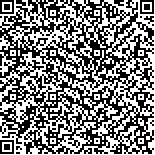| 摘要: |
| 旅游开发是历史文化街区活化利用的
重要途径。游客的认知兴趣能够如实反映历史
文化街区的价值传递与文化传承效果,引导具
有文化价值的旅游资源发展方向。为优化文化
场所营造、提高文化服务水平,游客感知逐渐成
为判断历史文化街区保护利用工作实际进展效
果的重要依据。本文选取西安市北院门历史文
化街区为研究对象,运用机器学习中的LDA主
题模型,从更关注历史内涵与文化价值传递的
视角,探讨历史文化街区游客感知的多维度评
价方法。研究发现:北院门历史文化街区的游客
感知总体呈现高度不均衡的特征,“民族特色
美食街”的感知形象占据主导地位;游客感知
维度按旅游吸引力强度依次为消费体验、地方
美食、景观建筑、环境氛围、生活记忆和非遗文
化,消费体验与地方美食维度高度绑定,且对其他维度的带动作用极为有限;不同游客感知维度评价差异显著,消费体验和景观建筑维度关注度
较高、满意度相对较低,历史文化传递效果欠佳,非遗文化和生活记忆维度满意度较高、关注度
相对较低,保护挖潜力度不足。研究结果能有效反映北院门街区对游客的历史文化传递效果,对
历史文化街区实现文化传承与旅游资源利用的双重目标具有重要意义。 |
| 关键词: 游客感知 机器学习 评价 历史文化街区 北院门 |
| DOI:10.13791/j.cnki.hsfwest.20240316 |
| 分类号: |
| 基金项目:国家自然科学基金重点项目(52338002);教育部人
文社会科学研究项目(23YJA760101);天津市规划
和自然资源局科技项目(KJ202326);天津市研究生
科研创新项目(2022BKY061) |
|
| Multi-dimensional evaluation of tourist perception in historic conversation area viamachine learning: Taking Beiyuanmen historic conversation area of Xi’an as an example |
|
XU Xiwei,GAO Siqi,LIU Shupeng,YAN Fengying
|
| Abstract: |
| Tourism i s a n i mportant way t o r evitalize H istoric C onversation A reas. T he c ognitive
interests of tourists can accurately reflect the value transmission and cultural inheritance effects
of Historic Conversation Areas, guiding towards a tendency for culturally valuable tourism
development. In order to optimize the creation of cultural venues and improve the level of cultural
services, tourists’ perceptions have gradually become an important basis for judging the actual
progress of the protection and utilization of historical and cultural streets.
Taking the Beiyuanmen Historic Conversation Area in Xi’an as an example, this study aims
to construct a multi-dimensional evaluation method framework to comprehensively and thoroughly
understand tourists’ perceptual characteristics of Historic Conversation Areas. This study utilized
Python to retrieve User-Generated Content (UGC) data from Dazhong Dianping, introduced the
Latent Dirichlet Allocation (LDA) model from machine learning, and used the ROST CM sentiment
analysis tool to quantitatively analyze tourist perceptions of the Beiyuanmen Historic Conversation
Area. It measured the overall features and sub-dimensions of tourists’ perceptions of Historic
Conversation Areas, discussing tourists’ attention and satisfaction levels across different dimensions.
Research findings indicate as follows: 1)The overall perception of tourists towards the Historic
Conversation Area of Beiyuanmen is in an extremely unbalanced state, with local image perception
far exceeding the overall image perception. The perception image of Beiyuanmen streets and
adjacent streets as ethnic characteristic food streets occupies an absolute central position in tourists’
perceptions. 2)The tourist perception dimensions of Historic Conversation Areas can be divided
into six aspects: consumption experience, local cuisine, landscape architecture, environmental
atmosphere, life memories, and intangible cultural heritage. The attractiveness of tourism shows
a decreasing differentiation feature, with consumption experience and local cuisine dimensions
closely related, jointly becoming the main motivation for attracting tourists to visit. However, there
is a significant gap between these dimensions and others, which disconnects from the authenticity of
social life atmosphere and historical cultural scenes in tourists’ perceptions, leading to a very limited
role in driving tourism. 3)There are significant differences in the attention and satisfaction evaluation
among the tourist perception dimensions of Historic Conversation Areas. The overall evaluation of
the local cuisine dimension is relatively high. Local specialty foods formed under the joint influence
of geographical environment and ethnic religious customs play an important role in enhancing
cultural identity. High-attention dimensions such as consumption experience and landscape
architecture, as expected perception dimensions of tourists, have poor cultural expression effects andstill have considerable room for improvement in tourist satisfaction. The impression tourists have of the Historic Conversation Area of Beiyuanmen mainly
remains at a superficial level of consumerism and one-way display of cultural space images. Enhancing the creation of cultural experiential scenes, avoiding
excessive tourist consumption leading to becoming a symbolic entity, is an aspect requiring effective management and significant improvement in the district.
The intangible cultural heritage and life memory dimensions, as representatives of the cultural and social aspects of Historic Conversation Areas, face risks
of being forgotten or marginalized. The pursuit of symbol economy squeezes the living space of daily use value, hinders the exploration of intrinsic cultural
value, and requires further enhancement of the emphasis on the authenticity of life. The environmental atmosphere dimension, as a subjective projection of
the spatial experiences of tourists, necessitates continuous adjustment in the district.
These research results effectively reflect the historical and cultural transmission effects of districts, holding significant importance for achieving
the dual objectives of cultural heritage inheritance protection and tourism resource development in Historic Conversation Areas. While the Beiyuanmen
Historic Conversation Area possesses certain advantages in terms of tourist perceptions, there are areas requiring urgent improvement. By optimizing
the consumption experience, enhancing local gourmet food, improving landscape architecture, fostering cultural atmosphere, preserving and inheriting
intangible cultural heritage, and emphasizing the authenticity of life, it may further elevate the attractiveness of Historic Conversation Areas, making them a
more appealing cultural tourism destination that aligns with tourists’ expectations. To achieve the dual objectives of cultural heritage inheritance protection
and tourism resource development in Historic Conversation Areas, it is recommended to enrich the tourism products and services of Historic Conversation
Areas, enhance tourists’ consumption experience and satisfaction; strengthen the planning and management of Historic Conversation Areas to ensure the
full protection of their historical and cultural characteristics; reinforce the creation of an environmental atmosphere and the inheritance of life memories in
Historic Conversation Areas, enhance the overall quality and image of the district, contributing to the city’s cultural inheritance and development efforts. |
| Key words: tourist perception machine learning evaluation historic conversation area Beiyuanmen |


